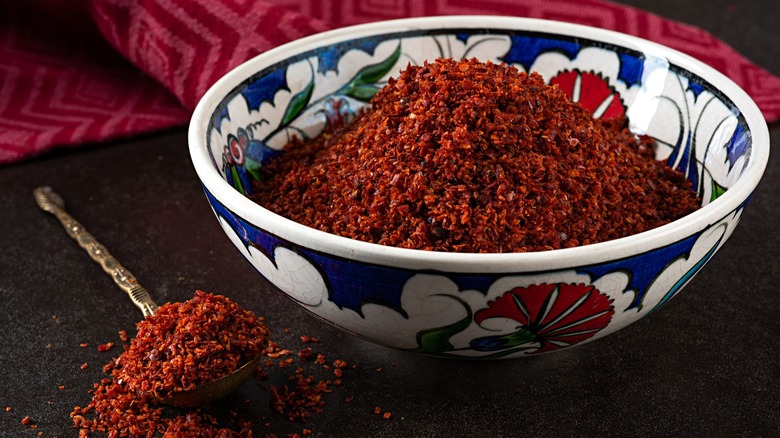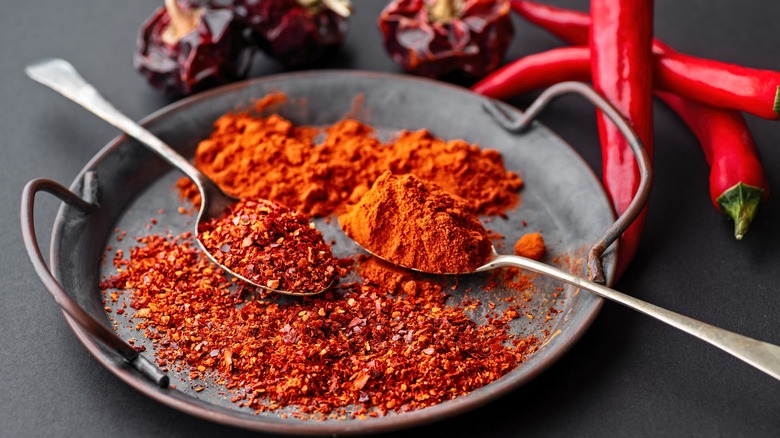What Exactly Is Paprika Made From?
Paprika is a mainstay in kitchen cupboards and spice racks of all shapes and sizes. The richly-hued, powdery spice has a place in pretty much every kitchen, from the haphazard, hobbled-together collections to the curated spice racks of top chefs like Gordon Ramsay, who continues to rely on paprika's unique flavor to marinate his mackerel. Despite its ubiquity, though, do you know what it's actually made of? These days, perhaps more than ever, people are quite distant from the production and source of their food — and that also applies to spices. And while you may know the proper methods for storing spices, it definitely helps to know what they are to begin with. Here's the thing with paprika though — there isn't just one simple answer.
In the most boiled-down sense, paprika is derived from finely-ground red bell peppers. Different paprika-making processes use distinct varieties of pepper and utilize different techniques, but all yield a batch of dried peppers that are then reduced to the versatile powder you know and love.
What distinguishes the different kinds of paprika?
This spice has been used in various cuisines around the world and is one you can rely on for delicious dishes. But not all paprika is the same; you're probably well-aware of it if you've ever tasted and compared two different varieties. Paprika can be categorized by how it tastes (sweet, spicy, or smoky, usually), but another method for classifying the spice's numerous variations is to sort them by region. This allows you to see the true characteristics of regular, Hungarian, and Spanish paprika.
Regular or basic paprika is the one you're probably most familiar with; it's the most commonly-available variety and is neither smoky nor overly sweet. You could think of this as your standard, baseline paprika that you compare others to.
Hungarian paprika is pretty diverse (which is fitting, considering paprika is the country's national spice). This paprika ranges in sweetness and spice levels, with the most common type, Noble Sweet, leaning on the sweet side.
This is held in contrast to Spanish paprika, which is sometimes known as "pimenton" — a nod to the pimento pepper. The pimento is different from the standard red pepper and yields a spicier paprika. Sometimes, the peppers will be roasted or charred prior to being ground, which results in a smoky paprika. But with so much paprika out there, you have a super simple way to diversify your dishes — all you need is a little spice.

